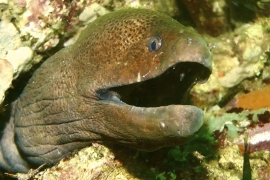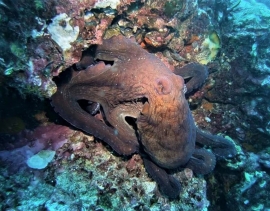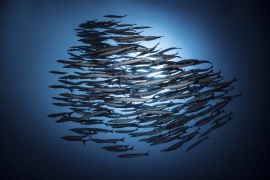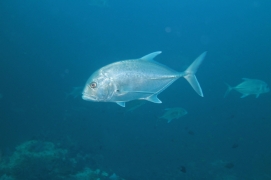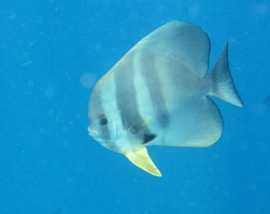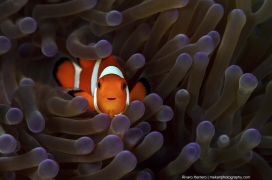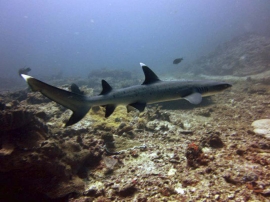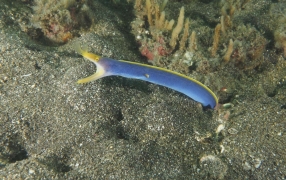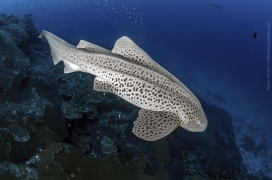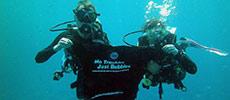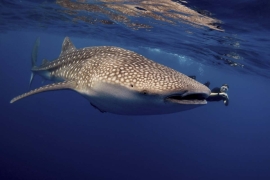
High Rock Liveaboard Diving
Myanmar's High Rock is in the southern area of the Mergui Archipelago and just 66 kilometres from Kawthoung. It's often chosen as a dive site to visit on the first day of a Myanmar liveaboard cruise. It sits alone out in the sea, 600 metres from Quoin Island, making it easy to spot and very photogenic. You can dive it once or more, depending on the currents and how quickly you want to swim along the reef.
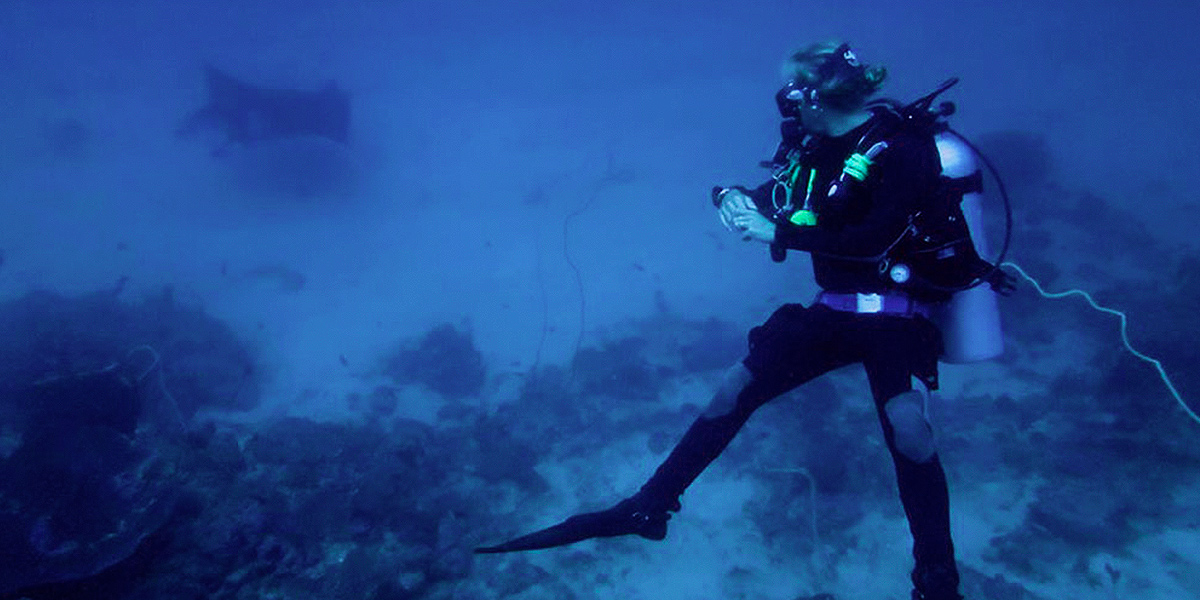
Above the water's surface, High Rock is one of the most-recognizable dive sites of Burma's Mergui Archipelago. This is because it sits alone with a single Banyan Tree on top. Depending on the sea conditions and your dive plan, your liveaboard diving safari boat will moor slightly up current, or in the shelter of the island down current. Then after jumping in and doing a final buddy check, you can descend to the sandy bottom, 30 or so metres below the surface. 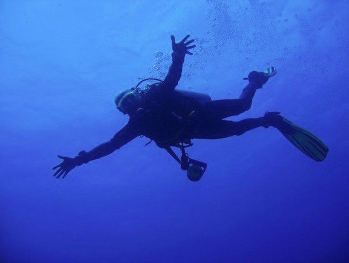 You may choose to stay in the sheltered side of the rock zigzagging & looking for the many seahorses and nudibranchs while swimming slowly until the end of your dive. Alternatively, some divers want to see it all, and choose to circle the rock while ascending. Either way, you will be very impressed with the resident and visiting marine life here. Expect to see huge shoals of Snappers and predatory Trevally. Barracuda are often seen here, too. Down deep, there are nearly always several species of stingrays and sleeping sharks. There are some old and discarded fishing nets from decades past, and these have become home to many small species, especially seahorses. Keen scuba diving photographers can spend lots of time looking for, and taking pictures of, these macro species. Large pelagics do pass by from time to time, but this dive site is better known for large shoals of fish plus the seahorses and other critters.
You may choose to stay in the sheltered side of the rock zigzagging & looking for the many seahorses and nudibranchs while swimming slowly until the end of your dive. Alternatively, some divers want to see it all, and choose to circle the rock while ascending. Either way, you will be very impressed with the resident and visiting marine life here. Expect to see huge shoals of Snappers and predatory Trevally. Barracuda are often seen here, too. Down deep, there are nearly always several species of stingrays and sleeping sharks. There are some old and discarded fishing nets from decades past, and these have become home to many small species, especially seahorses. Keen scuba diving photographers can spend lots of time looking for, and taking pictures of, these macro species. Large pelagics do pass by from time to time, but this dive site is better known for large shoals of fish plus the seahorses and other critters.
Currents aren't usually too strong here, and they usually flow northeast to southwest or vice versa. Surface waves can be a bit of an issue at certain times of year, depending on the winds. Visibility is generally very good, but not spectacular. In any case, there's so much life here that it's not unheard of to not be able to see the wall on the eastern side because so many fish are in the way!
Conditions at High Rock
When to dive at High Rock
Although there are no official regulations regarding when you can or can't dive, operators only offer trips from November until May. The rest of the year is the monsoon season for The Bay of Bengal, and weather and sea conditions are unpredictable and often dangerous for small vessels.
What type of dive site is High Rock
High Rock is a tiny uninhabited limestone islet, with just a single Banyan Tree on top. Underwater, the northern & eastern sides of High Rock are a wall dive, and the southern & western sides are a sloping rocky reef.
Where is High Rock?
High Rock is located 66km northwest of Kawthoung, and 48km west of the nearest part of the mainland. It's 600 metres south of Quoin Island. It's in the southern area of Mergui, and often one of the first (or final) dive sites on a Myanmar diving liveaboard safari cruise.
How to get to High Rock
To dive at High Rock, you need to join a scuba diving liveaboard safari. Nearly all of these trips begin in Ranong, Thailand and pass through Kawthoung.
Who can dive at High Rock
There are no fixed minimum certification or logged dive limits to dive at High Rock, but nearly all divers on the trips are Advanced, and have at least 50 logged dives. Therefore, in order to make buddy groups and so that no one's enjoyment is limited by others, it's important to be able to dive to 30 metres and handle a current.
What marine life can you see at High Rock?
In addition to the list of marine life on this page, you can see more species of rays in Myanmar than Thailand's Similan Islands. In addition to the ubiquitous Blue-Spotted Stingrays, look out for Marble Rays & Blotched Fantail Rays. Also, Nurse Sharks and Bamboo Sharks are possible to be seen here. Finally, look out for seahorses on the old & discarded fishing nets on the western side of the rock.
Summary of High Rock
High Rock is an excellent dive site that you can dive more than once in the same day without getting bored. It's not too far away from the mainland or other dive sites, and it has plenty of life from the surface down to the sandy seabed. Depending on the currents of the day, you may be able to do two-day dives and a night dive on your Burma diving liveaboard safari.

